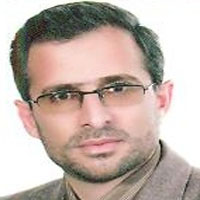Analysis of issues and challenges surrounding the Arabic language in Iran with a future-oriented approach
Author(s):
Article Type:
Research/Original Article (دارای رتبه معتبر)
Abstract:
Having a strategic approach to issues is one of the necessities of macro-management of institutions and organizations. Understanding the problem is considered the first step in any type of policy-making. The first step in public policy-making is recognizing the issue and formulating it to put it on the policy-making agenda, which is considered a separate process in public policy-making. The purpose of conducting "Issue System Studies" as a strategic study is to determine the general lines of existing insight and experience about the main and key topics in a specific area. To identify, prioritize, and select priority issues of the Arabic language, comprehensive, holistic, and strategic research is needed. The present research has examined the "system of Arabic language issues with a future-oriented approach". This research is considered among applied research, as it seeks to create a basis for policy-making to solve Arabic language issues by analyzing the system of Arabic language issues. The method of information collection for enumerating Arabic language issues was based on a descriptive exploratory approach using a combination of quantitative and qualitative methods, and the method of information analysis is based on thematic analysis (as a research strategy). Data collection was carried out through documentary studies, interviews, questionnaires, and holding expert panels. The results show that the super-challenge of the Arabic language in Iran is the "vacuum of a dominant discourse in the field of Arabic language in Iran". This discourse vacuum indicates the "abandonment of the Arabic language in Iran"; three key challenges as the highest priority issues include the introduction of artificial intelligence to Arabic language teaching, the lack of connection between Arabic language education and job market-required skills, and the duality of Arabic language teaching with the aim of understanding religious texts or general purposes. The future-oriented approach to the issues facing the Arabic language and attention to new changes in the technology sphere and its impact on the emergence of new and emerging challenges, including the introduction of artificial intelligence to Arabic language teaching, are among the innovations of this article and distinguish it from previous research.
Keywords:
Language:
Persian
Published:
Journal of Foreign Language Research, Volume:14 Issue: 3, 2024
Pages:
445 to 461
https://www.magiran.com/p2816591
سامانه نویسندگان
مقالات دیگری از این نویسنده (گان)
-
An Analysis of Rhetorical Reasoning in Madani Surahs of the Holy Qur'ān based on the Reasoning Theory of Chaïm Perelman
Ali Baqer Taherinia *, Masoumeh Taghizadeh, Ali Badri, Ali Ahmad Naseh
Literary - Qura'nic Researches, -
Rethinking the barriers of public participation in school governance based on institutional analysis
Monir Tajalli *, Ahmad Saidi, Alireza Chitsazian
Journal of New Approaches in Educational Administration, -
Designing and Validating an Efficient and Consistent Model for Maintaining and Improving the Productivity of Student Teachers at Farhangian University
Mohammad Azimi *, Seyed Mohammad Seyed Kalan,
Journal of Educational Planning Studies, -
Presenting a model of factors affecting the promotion of social resilience in the context of political and economic sanctions: A qualitative study
Ghasem Saedi, Abdolreza Adhami *, Ahmad Saeidi
Journal of Political and International Research, -
سیمای وفاق اجتماعی در اندیشه علوی (مورد مطالعه: نهج البلاغه)
*، حسین احمدی، سایه خدایاری مطلق
مجله پژوهش های جامعه شناختی، بهار و تابستان 1399 -
Social and cultural capital impact to entrance to informal employment sector (Case Study: Hamedans Chaparkhaneh trainers)
Asadollah Naghdi, , Soleiman Pakseresht, Saeed Isazadeh
Quarterly of Social Studies and Research in Iran,




